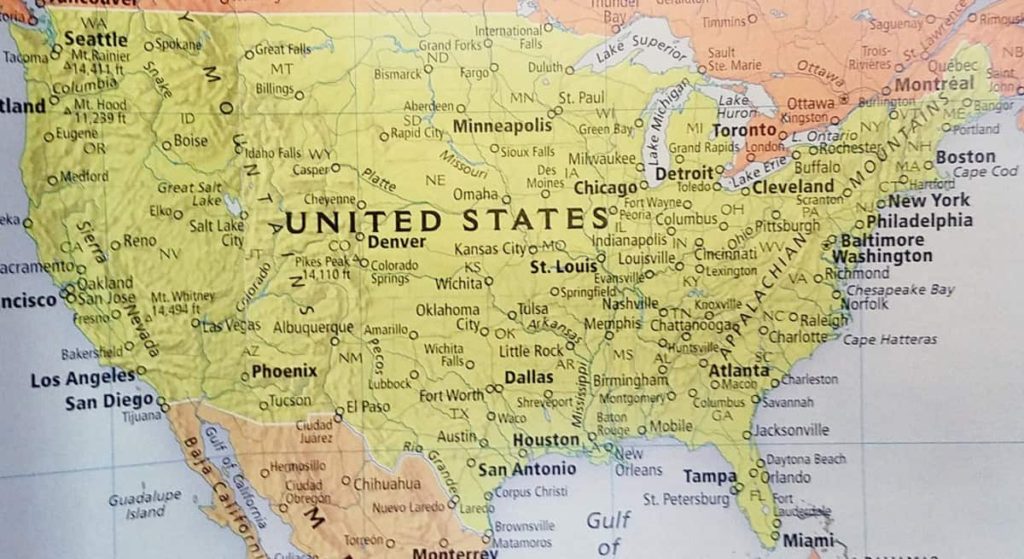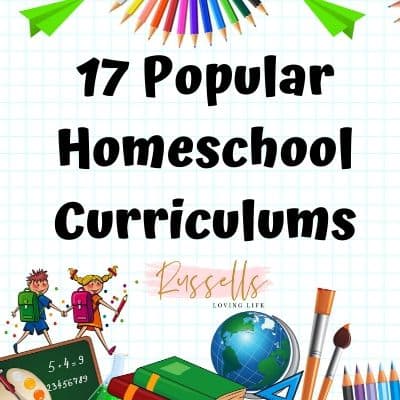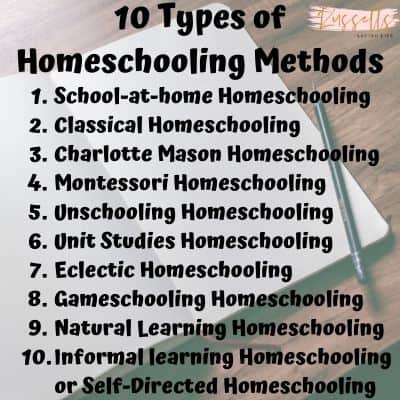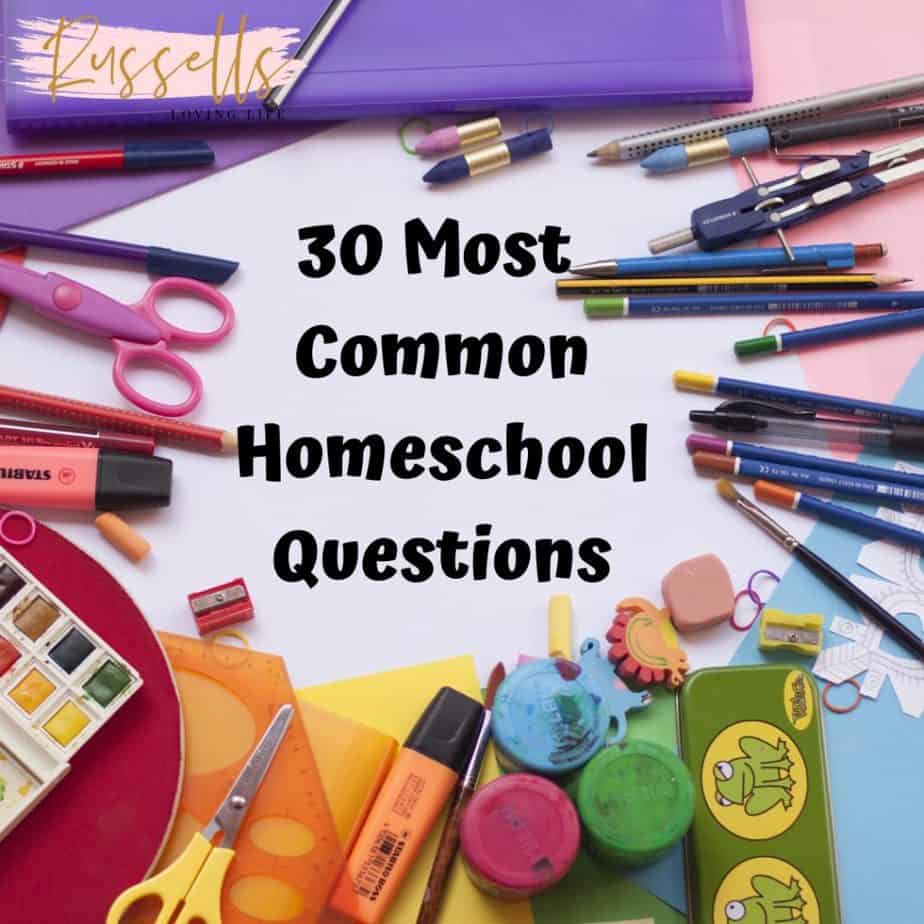Homeschooling can be scary and intimidating at first. Here are some questions and answers that will point you in the right directions.
When homeschooling a 5th grader, they need to be taught reading, writing, geography, history, art, music, math and science. Every state has different homeschool laws and requirements and you are required to follow these. Knowing you child’s learning style and what homeschool method works best for you family will take some time to learn.
If you are new to homeschooling or thinking about homeschooling I hope my years of research and experience helps you learn more about homeschooling your 5th grader.
How do I start homeschooling my 5th grader?
The first thing you need to do before you start homeschooling your kindergartner is to check your state’s laws and regulations for homeschool. I recommend the Home School Legal Defense Association or HSLDA. Make sure to check every year to see if any of your state’s laws and regulations have changed.
The second thing you need to do is to determined were to start. If your child has not done any preschool work, like writing their name, knowing some colors, some shapes and some of their ABCs that is the perfect place to start.
The third thing is to start looking at homeschool curriculums if your child has mastered some of the above preschool skills. This may seem overwhelming at first but it does not have to be. Most Kindergarten curriculums contain the same basic information. I will cover Kindergarten curriculums a little later.
Last is to just have fun! Take it slow at first until you and your child get the hang of homeschooling. There will be some bumps in the road, but you know a lot about your child and this will help you along the way. Click Here to learn more.
What qualifications do you need to homeschool your 5th grade child?
According to the Coalition For Responsible Home Education or CRHE, most states do not require parent qualifications to homeschool. But there are 11 States that require a High School Diploma, GED, College Credits, or the completions of a Homeschool Study Course.
Here are the 11 states that require qualifications for you to teach your child at home. Please make sure to check what your state’s qualifications are in the link above.
- Georgia
- New Mexico
- North Carolina
- North Dakota
- Ohio
- Pennsylvania
- South Carolina
- Tennessee
- Virginia
- Washington
- West Virginia

What 5th grade curriculums do I use?
My Father’s World created and developed a curriculum that can be used with 2nd through 8th grade students focusing on the time period from the Roman Empire though the Middle Ages, and ending with the Renaissance and the Reformation MFW titled this curriculum Rome to the Reformation.
What are the most popular homeschool curriculums?
The seventeen most popular homeschool curriculums are My Father’s World, A Beka, Sonlight, Bob Jones (BJU Press), K12, Khan Academy, Easy Peasy All in One Homeschool, Alpha Omega, Time4Leaning, Classical Academic Press, Acellus Power Homeschool, Memoria Press, Oak Meadow, Veritas Press, Timberdoodle, Calvert Education, and The Good and The Beautiful. Click here to learn more about each curriculum.

What subjects should be taught in 5th grade?
5th Graders need to be taught the following subjects:
- Reading
- Writing
- Geography
- History
- Art
- Music
- Math
- Science
What do 5th graders learn in math?
In the 5th grade children should be learning the following in math:
- Fractions
- Least Common Multiple
- Greatest Common Factor
- Ratios
- Decimals
- Percentages
- Diameters
- Radius
- Circumference of circles
- Identify angles
- Measure angles
- Solve basic equations using variables
- Mean
- Median
- Mode
- Understand probability
How long should a 5th grader read each day?
When researching how long should a 5th grader read each day, I came across articles with different times. The time frame is from 30-45 mins per day. Reading longer is always better. I have always used the 10 mins scale. My children read for 10 mins per grade not going over an hour.
5th Grade Reading list
It can be hard to find a Reading List for 5th grade, but thanks to GoodReads.com, GreatSchools.org, and Scholastic.com here is a great start.
How long should I homeschool my 5th grader each day?

The answer depends on your homeschool curriculum, your child’s learning ability, and of course interruptions from the younger children. When I am homeschooling my 5th grader using My Father’s World, Saxon Math and Growing with Grammar it usually time 3-4 hours per day. This does not count his reading time at night.
How do homeschool children socialize?
There are so many options for homeschool children to socialize these days. Here is a list of some examples:
- Homeschool groups
- Homeschool Co-ops
- Library events and activities
- Church events and activities
- Volunteering
- Sports
- Field trips
- Girl Scouts
- Boy Scouts
- American Heritage Girls
- Trail Life USA
- Homeschool skate days
- Homeschool bowing days
- Local Children’s Theater
7 Ways Children Learn
Every child learns in their own way. Being a homeschool mom of more than one child I have figured that out, but I did not know what the learning styles were called until I looked in to them. This is what I learned.
- Visual Learner also known as a Spatial Learner – Visual or Spatial learners learn better by graphs, tables, charts, maps, colors, diagrams, flash cards or watching educational videos. They sometime tend to look at the big picture and miss the details.
- Aural Learner also known as an Auditory Learner – Aural or Auditory learners learn better by listening. They tend to do better is a lecture style of environment. Aural or Auditory learners also tend to learn better by engaging in conversations, listening to music and videos.
- Verbal Learner also known as an Linguistic Learner – Verbal or Linguistic learners learn best by writing or speaking. They tend to learn better by language reasoning than abstract information. Verbal or Linguistic learning are usually better at word problems then they are at solving equations.
- Physical Learner also known as a Kinesthetic Learner – Physical or Kinesthetic learners learn better through movement rather than from a lecture. They learn through body movement, control or expression.
- Logical Learner also known as a Mathematical Learner – Logical or Mathematical learners learn by problem solving, statics and facts, using numbers or their ability to reason. They usually learn by using visual, kinetic and auditory learning styles. Logical or Mathematical learners learn best in an organized space.
- Social Learner also known as an Interpersonal Learner – Social or Interpersonal learners tend to work well in a group and flourish on building relationships. They tend to communicate well through verbal and non verbal communication. Social or Interpersonal learners are also referred to as “people smart.”
- Solitary Learner also known as an Intrapersonal Learner – Solitary or Intrapersonal learners learn better when they work alone. They are self-motivated, concentrate well, and think independently. Solitary or Intrapersonal learners need a distraction free space to learn.

10 Types of Homeschooling Methods
- School-at-Home Homeschooling – School-at-home is when you mimic public or private schools in your home. Most new homeschooling families start with this method until they figure out what works best for them. Most of the time, when you buy an All-In-One curriculum or School in a box this is the type of method you are doing. We have used this method since we stared homeschooling and it is what works best for us, but it may not work well for everyone. We use My Father’s World curriculum and we love it!
- Classical Homeschooling – Classical homeschooling focuses on a three part process. The first part is the Grammar Stage. The Grammar Stage is when you build a basic knowledge of the core subjects like math, language arts, science and history. The second part is the Logic Stage. The Logic State is when children want to know more about a topic or subject. Children typically state asking “why”. These questions help them to reach a conclusion on their own. The Third and final part is the Abstract Stage. The Abstract or Rhetoric Stage combines their knowledge of core subjects and their ability to reach a conclusion together.
- Charlotte Mason Homeschooling – Charlotte Mason Homeschooling was developed by Charlotte Mason. She placed emphasis on literature and she even coined the phrase “Living books”. She believed in sparking the imagination of a child through subject matter. Charlotte Mason’s motto was “Education is an atmosphere, a discipline, a life.” She wanted wanted children to learn self-discipline as well as their academics. When using this method to homeschool, you will read lots of literature, explore nature outside, art, music, journalling, dictation and copywork.
- Montessori Homeschooling – Montessori is also known as Montessori Method of Education. It was developed by Maria Montessori and her method focuses on the development of children, physically, socially, emotionally, and cognitively. Parents facilitate and the child directs the learning. What I mean by this is that the parents find curriculums or material that fit their child’s interest. This encourages students to learn more about their interests. The Montessori method encourage children to pick what learning activities they want to use, have hands on activities, work at their own pace, and active learning methods.
- Unschooling Homeschooling – Unschooling is informal learning where the student learns though life experiences. “The term “unschooling” was coined in the 1970s and used by educator John Holt, widely regarded as the father of Unschooling,” according to Wikipedia. Mary Griffith, author of “The Unschooling Handbook” states, “Unschooling means learning what one wants, when one wants, in the way one wants, for one’s own reasons,”
- Unit Studies Homeschooling – Unit Studies Homeschooling is when core subjects are taught on one single topic. This method is usually used by Homeschooling families that teach different aged children at one time. Unit Studies also allow children to dive deeper into a topic. Children will usually retain more from this method.
- Eclectic Homeschooling – Eclectic Homeschooling is when you pick and choose from many different books, websites, curriculums, board games and so on to teach your children. Many homeschool families choose this method. Using this method allows you to pick what works best for each of your children. For example, just because one math curriculum works well for one of your children, does not mean it will work well with all of them.
- Gameschooling Homeschooling – Gameschooling is when a board game is used to help a child learn a particular skill or to learn more about a subject. Gameschooling is a fun way for kids to learn more about a subject and have fun at the same time. Some homeschool families decide to game school instead of using a curriculum for a given subject.
- Natural Learning Homeschooling – Natural Learning Homeschooling according to Wikipedia, “Natural learning” refers to a type of learning-on-demand where children pursue knowledge based on their interests and parents take an active part in facilitating activities and experiences conducive to learning but do not rely heavily on textbooks or spend much time “teaching”, looking instead for “learning moments” throughout their daily activities.
- Informal learning Homeschooling or Self-Directed Homeschooling – Informal Learning Homeschooling or Self-Directed Homeschooling is learning that happens through everyday life participation and creation. Anything from planting a garden to baking a cake or even talking to a technician at work about the installation of new software can be considered informal learning are some examples from Wikipedia.
When homeschooling you do not have to fit into one of the methods. Our homeschool usually falls under a mixture of methods. I hope this helps you find what works best for your family.
Before Mike and I decided to homeschool we had lots of questions just like you. I got on Google and did lots of research. I even contacted a homeschool mom and asked her lots of questions. Here is a list of the most common homeschool questions.

